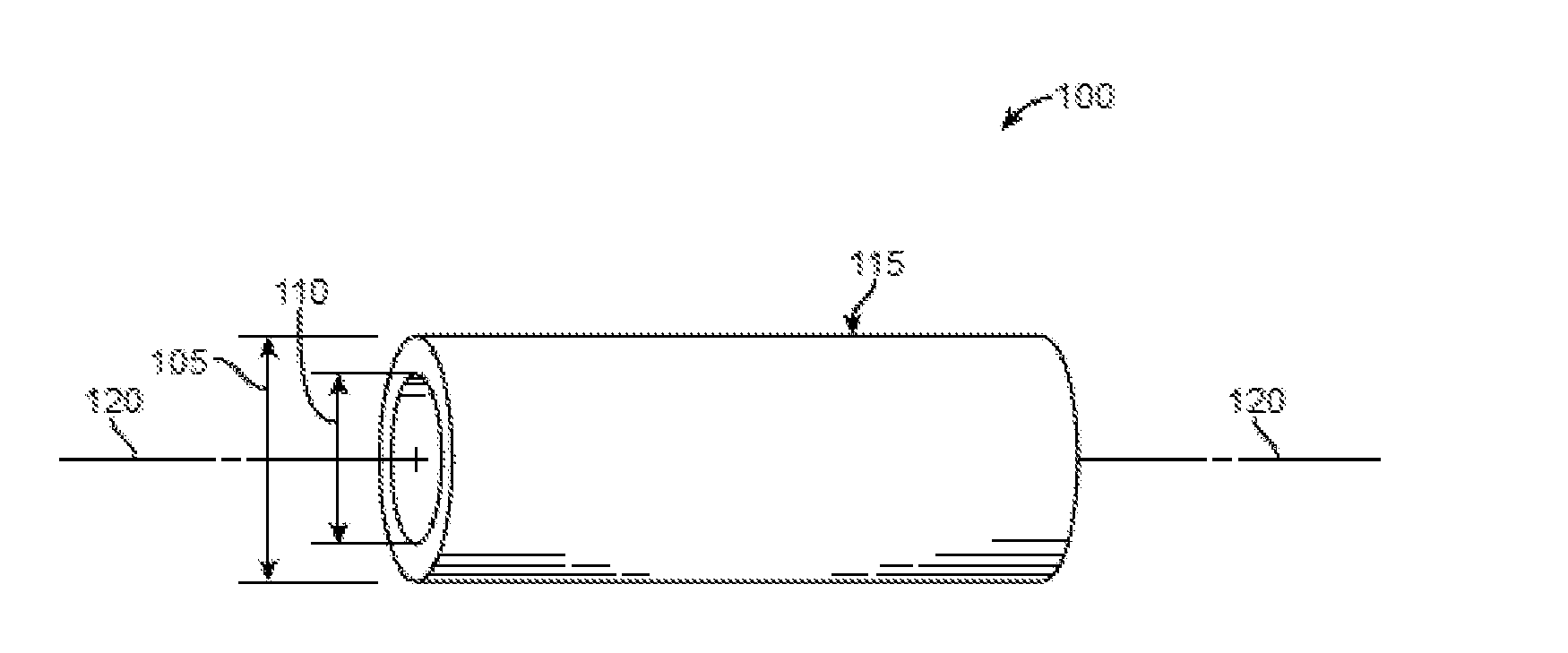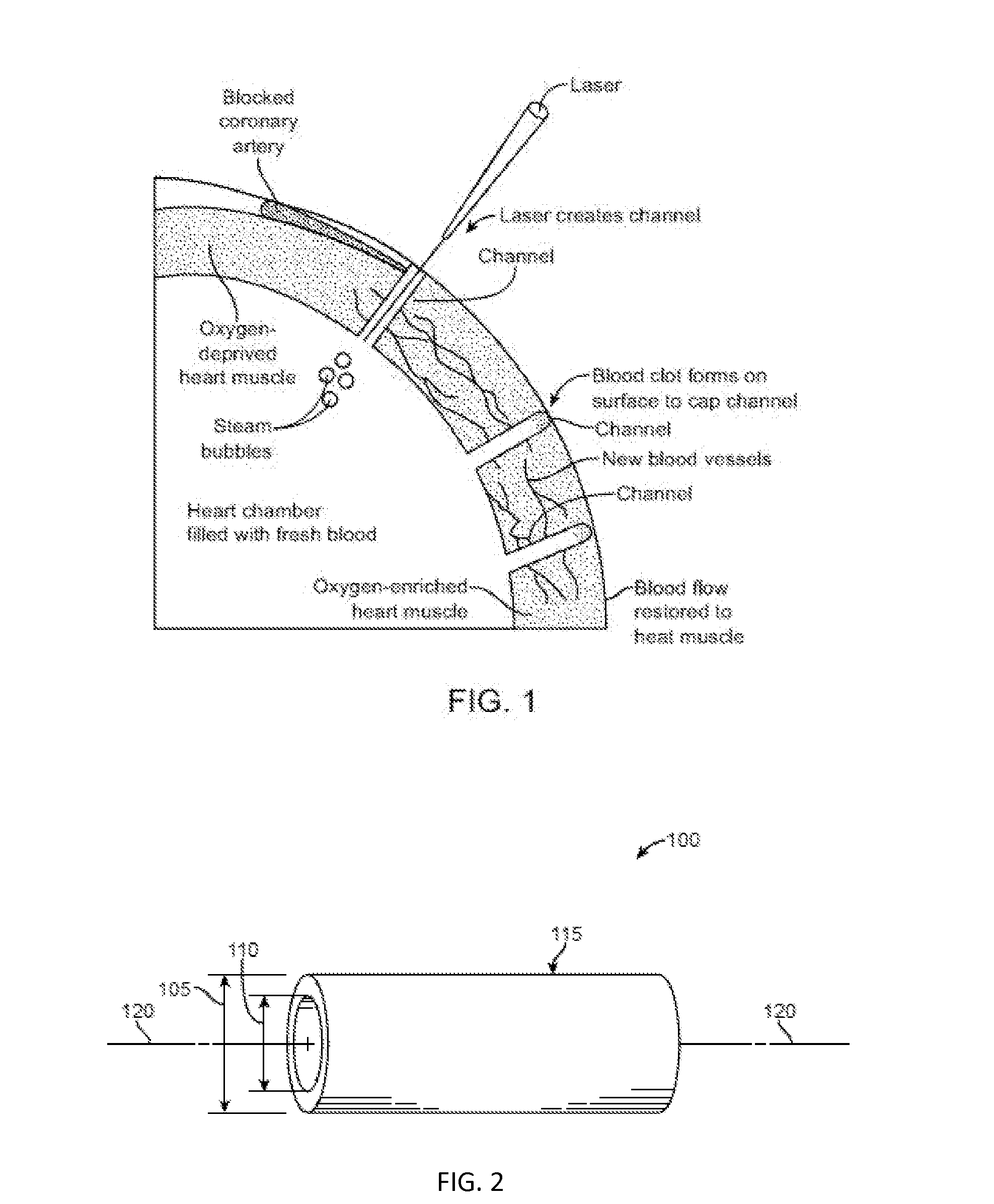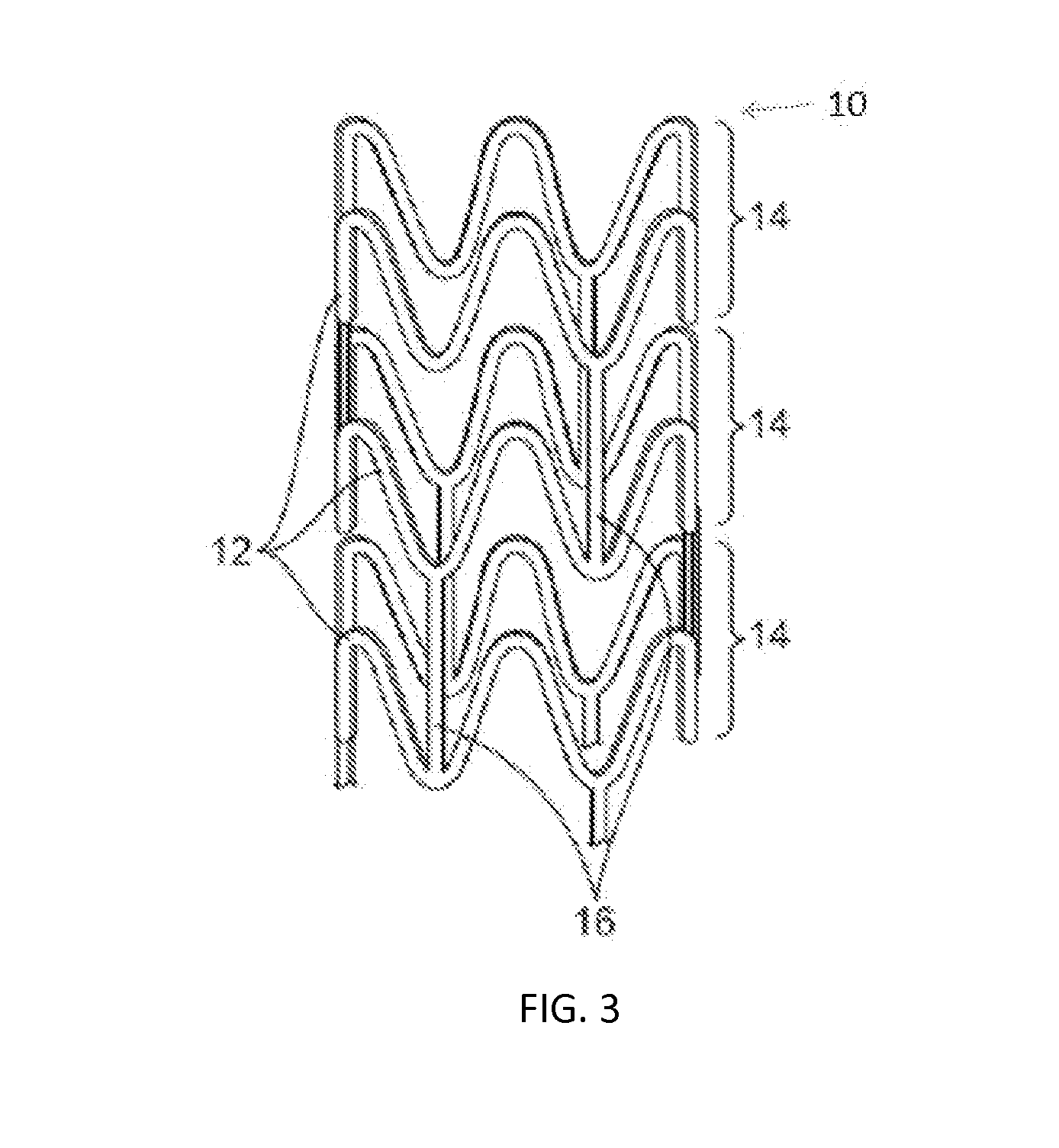Bioresorbable implants for transmyocardial revascularization
a bioresorbable, implant technology, applied in the field of bioresorbable implants, can solve the problems of ineffectiveness, inability to achieve the effect of above interventional procedures, and inability to achieve the effect of surgery,
- Summary
- Abstract
- Description
- Claims
- Application Information
AI Technical Summary
Benefits of technology
Problems solved by technology
Method used
Image
Examples
example
[0121]A transmyocardial revascularization procedure was performed on a swine by first ligating the porcine left anterior descending coronary artery (LAD) at the middle third of the artery to induce LAD occlusion and then inserting a drug loaded PLGA porous tubing into a drilled channel through the left ventricle wall of the swine. At six weeks post-operation, the implant group with heparin and bFGF promoted neovascular formation, enhanced blood-flow perfusion, and improved myocardial function.
PUM
| Property | Measurement | Unit |
|---|---|---|
| diameter | aaaaa | aaaaa |
| diameter | aaaaa | aaaaa |
| diameter | aaaaa | aaaaa |
Abstract
Description
Claims
Application Information
 Login to View More
Login to View More - R&D
- Intellectual Property
- Life Sciences
- Materials
- Tech Scout
- Unparalleled Data Quality
- Higher Quality Content
- 60% Fewer Hallucinations
Browse by: Latest US Patents, China's latest patents, Technical Efficacy Thesaurus, Application Domain, Technology Topic, Popular Technical Reports.
© 2025 PatSnap. All rights reserved.Legal|Privacy policy|Modern Slavery Act Transparency Statement|Sitemap|About US| Contact US: help@patsnap.com



